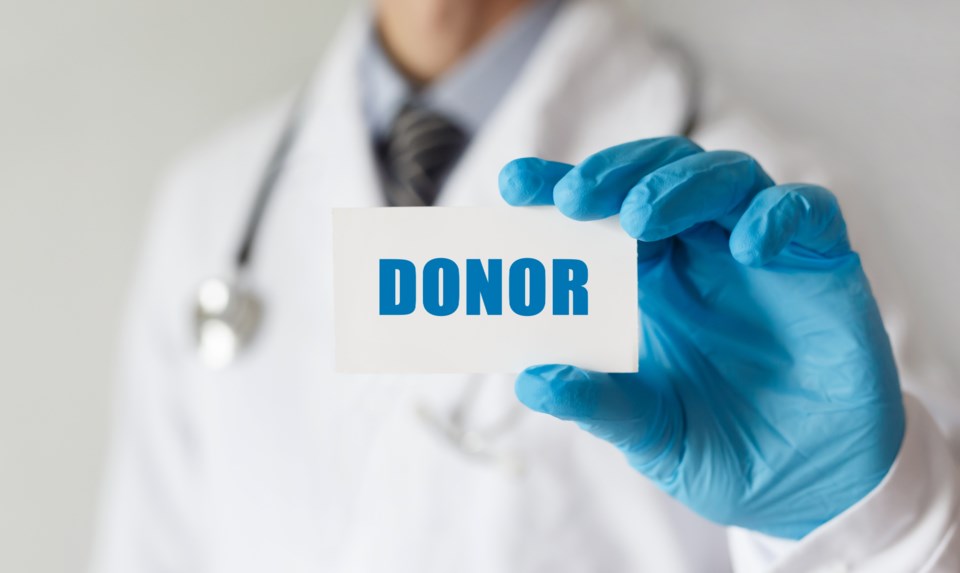The Canadian medical community needs to monitor carefully a new organ donation procedure in Nova Scotia where a law has come into effect that states unless a person specifically opts out of organ donation, it will be deemed that the person has consented to organ donation at the time of their death.
Nova Scotia's Human Organ and Tissue Donation Act came into effect in January.
A commentary published this week in the Canadian Medical Association Journal (CMAJ) reports that the new law in Nova Scotia is the first of its kind in North America and is bound to generate a lot of attention as well as scrutiny.
The CMAJ article is authored by Matthew J. Weiss of Transplant Québec; CHU de Québec — Université Laval Research Center and Jade Dirk, Nova Scotia Health Authority, Halifax, NS.
"In discussions regarding deceased organ donation policy, few topics generate more debate than deemed consent, often referred to as presumed or opt-out consent. Although variations exist, the basic definition of deemed consent is that all competent members of a jurisdiction are assumed to have given their consent for deceased organ donation unless they have explicitly registered otherwise," they wrote.
Nova Scotia's ministry of health website described the importance of the new law.
"Organ and tissue donation saves lives, and gives hope to those waiting for life-saving and life-enhancing transplants. One donor can save or improve the lives of over 80 people. Donated organs – such as heart, liver, kidneys and lungs – save the lives of those who need them. Donated tissues – such as skin, bone, tendons, heart valves and corneas – can restore sight and mobility, help people recover from cancer surgery, and save the lives of burn patients and those who are critically ill with heart disease," said the ministry.
The law applies to people aged 18 and older, people who have decision-making capacity and those who have lived in Nova Scotia longer than 12 months.
The law is regarded as progressive by those who actively favour organ donor programs. In other provinces, there have been regular campaigns urging residents to register for organ donor programs. In Ontario, residents are asked about their organ donor preferences when they renew their driver's licence or provincial health insurance card.
The Nova Scotia program is seen as a way to speed up the process by increasing organ and tissue donations with the prospect of saving more lives.
The authors wrote that similar programs in international jurisdictions have had mixed results.
"A 2019 systematic review concluded that countries with deemed consent had donation rates 20 per cent to 75 per cent higher than countries using other consent models.”
However, only one of six studies included in the review showed that the consent model was the primary factor influencing donation rates. Instead, national health care expenditures and number of potential donors (closely related to vehicular safety and incidence of strokes) were more closely correlated with donation rates.
In contrast, a 2019 analysis of databases from 35 countries did not show a “statistically significant donation or transplant advantage to deemed consent," the authors wrote.
In one study, reported by Science Direct, based on data where 17 countries were listed as opt-out of the donor program, while 18 countries were listed as opt-in.
"Overall, no significant difference was observed in rates (per million population) of kidney (35.2 versus 42.3 respectively), non-renal (28.7 versus 20.9, respectively), or total solid organ transplantation (63.6 versus 61.7, respectively)," said the study.
"Our data demonstrate no significant difference in deceased donation or solid organ transplantation activity between opt-out versus opt-in countries," the Science Direct report continued.
The CMAJ authors suggested that the consent issue itself is not all that proponents expect it should be.
"Consent models do not affect the pool of eligible donors, alter the number of people who need transplantation, or create timely access to operating rooms. Indeed, consent model success would be better measured using metrics such as identification and referral rates of eligible donors, the number of planned approaches that appropriately integrate the possibility of donation into end-of-life conversations and consent rates from approached families. These measures would ensure that systems evaluate how often and how well donation opportunities are integrated into end-of-life care."
Despite that, the authors said deemed consent "holds a special place of interest among the general public, clinicians and legislators hoping to improve donation performance, and its impact in Canada must be measured."
The CMAJ authors said the Nova Scotia model will need to be watched and evaluated in the coming years and timely audits will be used to measure outcomes.
"Specialized training in the methods of approaching families to discuss donation, and recruiting hospital-based donation champions to develop and implement hospital procedures that facilitate donation are additional key interventions that have been associated with improvement; these will also be incorporated and evaluated," said the CMAJ report.
The authors also noted that a research project has been initiated to monitor the Nova Scotia consent program "to not only compare quantitative outcomes across provinces, but also to rigorously assess the attitudes of health care workers and the general public regarding these changes. Special care is being taken to reach out to historically underrepresented groups that may have particular reasons to distrust the concept of presuming consent for donation. No one knows exactly what the impact of the deemed consent policy is going to be in Nova Scotia, but, by studying it carefully, future debates around Canadian consent models will be based less on presumptions and more on data."



